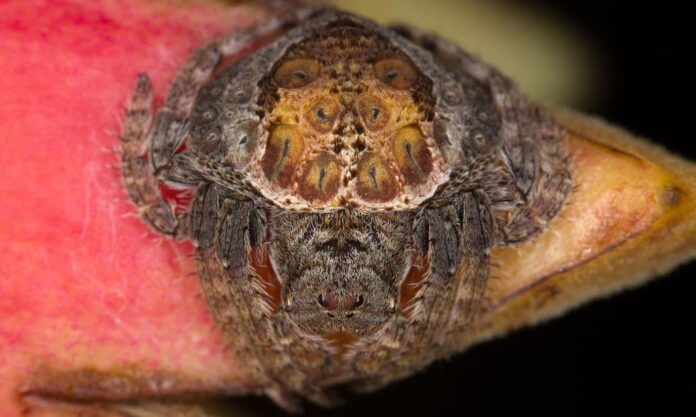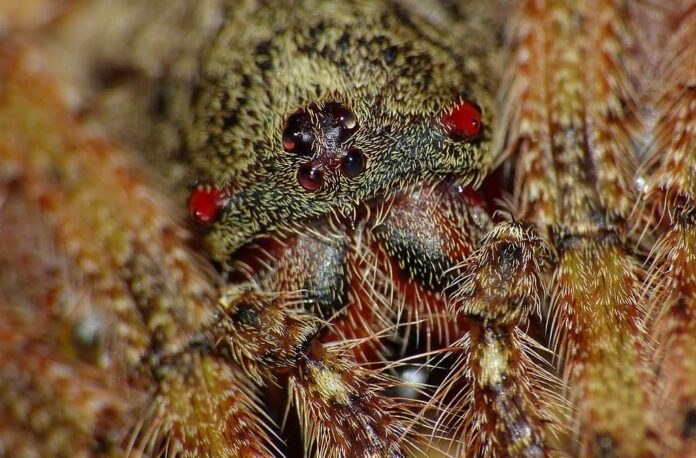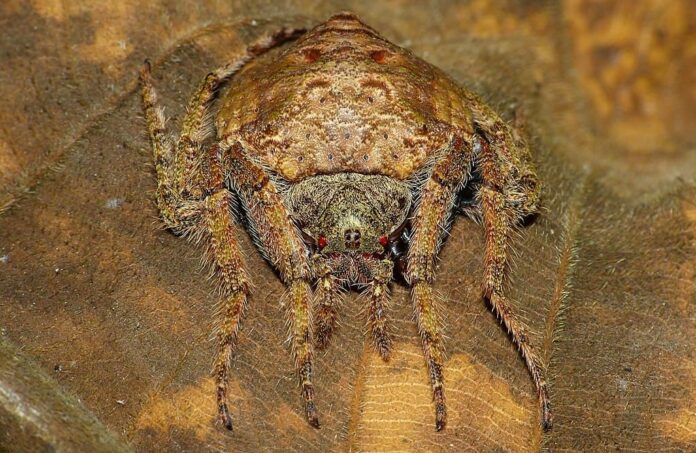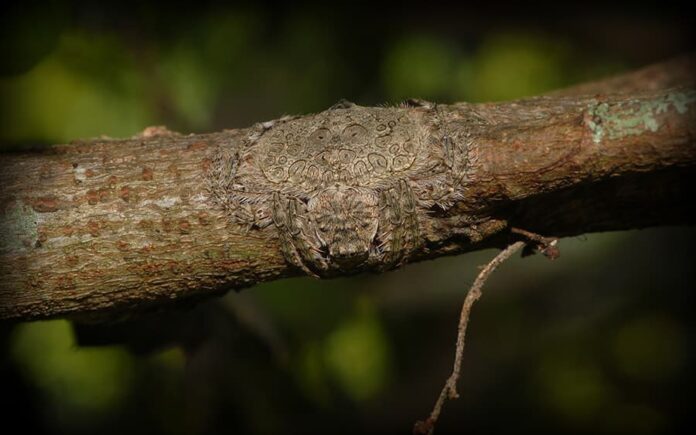So what’s new about spiders this time? We have the wrap-around spider, a special arachnid that can flatten and wrap its body around tree limbs. Imagine hiking or walking in the forest, and then you rest as you grab a random tree branch. Well, let’s think twice before doing that now because both you and the spider will probably jump. Let’s find out more about them below, maybe they are not as scary as they appear!
1Appearance

A wrap-around spider has a brown body that provides excellent camouflage with the tree bark and limbs. Females are 0.9 centimeters in size which is larger than males which are only around 0.5-0.6 centimeters big. This spider species has a flat upper abdomen that allows it to stay so flat on the tree. The concave abdomen is curved in such a way that it fits well around the twig when it rests.
At the same time, they also have ring-like patterns all over their body to aid more with the camouflage. The scary part is when you look closer and you see that dreadful and fierce face. Despite the appearance, wrap-around spiders are not venomous to humans though they may bite when provoked.
2Behavior

The wrap-around spiders are solitary, and they do not live in groups with other spiders at all. Just like other solitary animals, they only come together during the mating season. Females can lay up to 1000 eggs after mating, and the spiderlings leave their mother until they can hunt by themselves.
3Feeding & Habitats

Not different from other spiders, wrap-around spiders also prey on insects that are caught in their webs. As soon as the spider sees the insects are stuck in its sticky web, it quickly approaches and wraps the prey with more web.
Indigenous to Australia just like every other dangerous and freaky animal, wrap-around spiders live on trees. To be more specific, wrap-around spiders are native solely to Western Australia. During the day time, they camouflage on tree branches and trunks using their special flat body ability. When the evening comes, they stay in webs that they spin between trees every day getting ready to capture prey. On some occasions, they also travel on the ground to look for food. And before the sun comes up, it will destroy its web and go back to camouflaging.
Related Post: Twig Spider Facts




